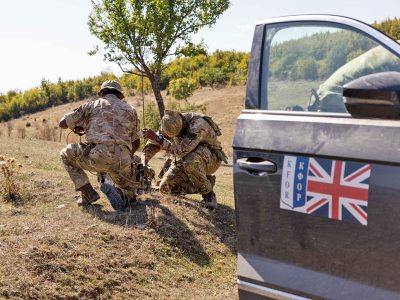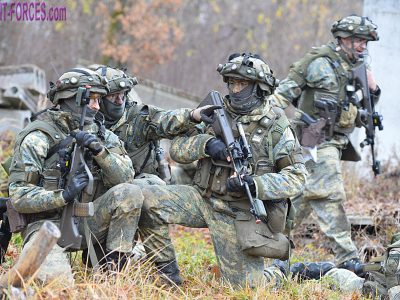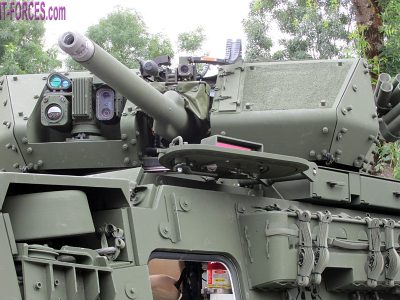This autumn Britain’s 1st Battalion the Princess of Wales’s Royal Regiment and Germany’s Jäger Bataillon 1 conducted interoperability training at Schwarzenborn, continues Carl Schulze.
Run between 17th and 28th of September 2018, this Interoperability Training was aimed at preparing the participating German and British troops for next year’s US-led Exercise ALLIED SPIRIT 2019, which will take place at the Hohenfels Training Area of the Joint Multinational Readiness Center (JMRC) of the 7th Army Training Command (7th ATC) of the US Army. In more detail, the aims for the British troops included: developing an understanding for German Army Battle Group tactics; gaining experience in the integration of British sub-unit procedures into those of a German-led Battle Group Headquarters; developing understanding of the practicality of commodity sharing; developing and training RSOI (Reception, Staging, Onward Movement and Integration) procedures; investigating Fire Support coordination procedures; and developing, understanding and integrating a system of communications.
![[© Carl Schulze]](http://www.joint-forces.com/wp-content/uploads/2018/10/PWRR-IT-06-300x200.jpg)
Oberstleutnant Schröder, the CO of Jäger Bataillon 1, and Major Swales, OC of A Company 1 PWRR, discuss the outcome of the previous engagement between German and British troops [© Carl Schulze]
![[© Carl Schulze]](http://www.joint-forces.com/wp-content/uploads/2018/10/PWRR-IT-10-300x200.jpg)
The final objective for A Company 1 PWRR was the Warzenberg mountain, well defended by dug-in light infantry of 4. Kompanie Jäger Bataillon 1 [© Carl Schulze]
Week Two saw the troops conducting a three day force-on-force exercise that was mainly conducted on the local Schwarzenborn Training Area but also partly on public ground, something British troops had been used to back during the times of the Cold War but which nowadays is rare and so is an exciting bonus.
The British contingent taking part in the Interoperability Training was centred around A Company of the 1st Battalion, The Princess of Wales’s Royal Regiment. The Company Group numbered 105 soldiers and also included elements from the battalion’s Support Company and Royal Electrical and Mechanical Engineers Light Aid Detachment (REME LAD). The troops fielded eight FV510 Warrior Infantry Section Vehicles, two FV511 Warrior Infantry Command Vehicles, three FV512 Mechanised Combat Repair Vehicles and FV513 Mechanised Recovery Vehicles (Repair) and two FV432 Mk3 Bulldog Armoured Personnel Carriers as well as wheeled support vehicles.
![[© Carl Schulze]](http://www.joint-forces.com/wp-content/uploads/2018/10/PWRR-IT-08-300x200.jpg)
A Transportpanzer 1 Fuchs wheeled armoured personnel carrier fitted with a MILAN anti-tank weapon system covers an approach road to the Warzenberg, the final objective of the British Company Group [© Carl Schulze]
When, after three days, the fighting ended Oberstleutnant Wolfgang Schröder, the Commanding Officer of Jäger Bataillon 1 stated: “Both sides fought very well and were highly motivated.” When asked about the winner he answered: “It is a draw, with the soldiers of both sides being the winners by gaining a lot of experience.”
![[© Carl Schulze]](http://www.joint-forces.com/wp-content/uploads/2018/10/PWRR-IT-09-300x200.jpg)
The German Waffenträger 1 Wiesel TOW caused the British difficulties being extremely hard to spot and out-gunning the Warrior [© Carl Schulze]
{ images © Carl Schulze }


![[© Carl Schulze]](https://www.joint-forces.com/wp-content/uploads/2018/10/PWRR-IT-05.jpg)


















Pingback : Jäger and Tiger ~ Interoperability Training Pt.1 | Joint Forces News